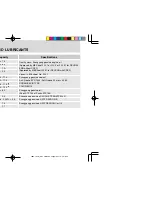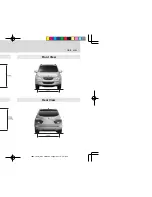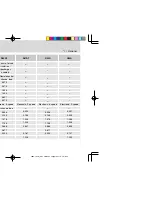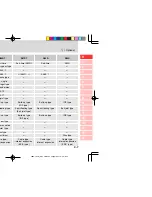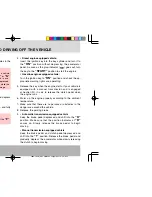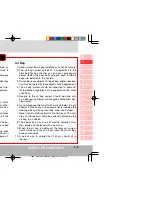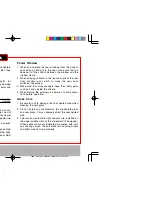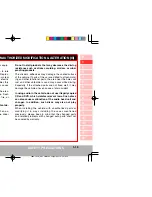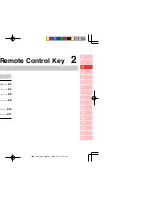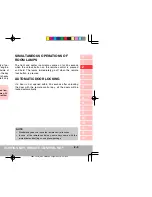
SAFETY PRECAUTIONS
1-5
0
1
2
3
4
5
6
7
8
9
10
11
12
13
14
15
16
SAFETY PRECAUTIONS (I)
SAFETY PRECAUTIONS
Ignition Key/Remote Control Key
1. Never use any duplicated key not provided by
Ssangyong. It may cause a fire due to an overload in
the electric circuit.
2. If you lose your keys, you have to replace the whole key
set to prevent from theft.
3. Avoid shock to the transmitter in the remote control key
and do not get it wet.
4. Only use the batteries with the same specifications to re-
place the discharged battery. Do not reverse the polarity.
Turbocharger System (Diesel Engine
Equipped Vehicle)
If the oil supply for the bearing assembly of the fast rotat-
ing turbo charger stops, the stop will cause the turbo-
charger to seize. Therefore, the following cares are nec-
essary to prevent the seizure.
1. After starting the engine, let it run for approx. 2 minutes
at idle speed (Avoid acceleration or driving off the
vehicle).
2. After changing the engine oil and oil filter, start the en-
gine and let it run for approx. 2 minutes at idle speed
(Avoid acceleration or driving off the vehicle).
3. Do not stop the engine immediately after coming back
from high load driving (such as high speed driving or
driving on long slope). Let the engine run for approx. 2
minutes at idle speed to cool it down.
Air Bag
1. Never impact the air bag installations by hands or tools.
2. The air bag system serves as a supplement to the
seat belt. Make sure that you and your passengers
always fasten the seat belts properly even if the air
bags are installed in the vehicle.
3. Do not place any objects on the air bag inflation location.
You may be injured by those objects during deployment.
4. The air bag system should be inspected 10 years af-
ter installation regardless of its appearance and other
conditions.
5. Repairs to the air bag system should be done only
by a Ssangyong Dealer or Ssangyong Authorized Ser-
vice Center.
6. Do not diagnose the circuit with a circuit tester. Do not
attempt to modify any air bag components including the
steering wheel, air bag mounting area, and harness.
7. Never install a child restraint in the front seat. The chil-
dren on the restraint could be seriously injured by the
air bag in a collision.
8. The deployed air bag unit should be removed from
the vehicle and replaced with a new one.
9. When the air bag is deployed, the relevant compo-
nents will be very hot, so do not touch them until they
have cooled down.
10. A person who is smaller than 140 cm should sit in
the rear.
D146_01-Safety Precautions_en.p65
2009-12-30, ¿ÀÀü 3:18
Page 5
Adobe PageMaker 6.5K/Win


